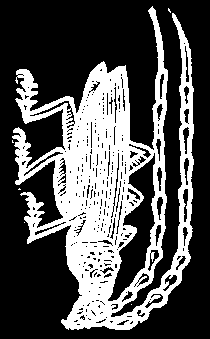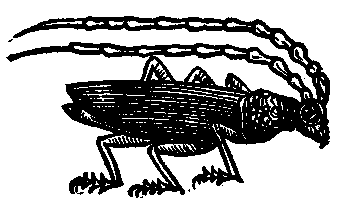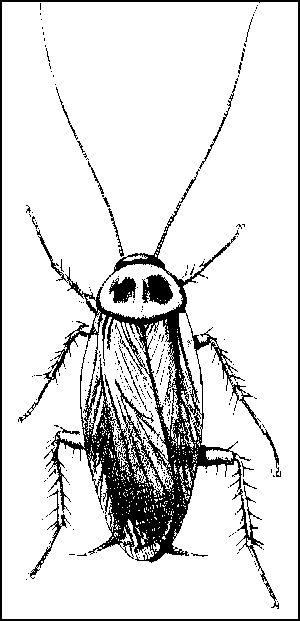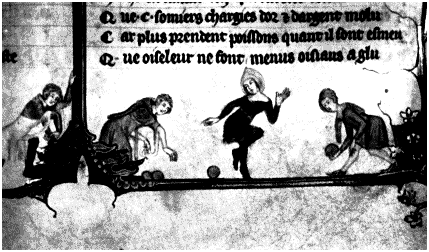Of a Spiritually
Incorrect Mystic
Osho [Rajneesh]
(St. Martin's Press)

Rajneesh, we find here, has come back again, disguised as "Osho" --- the name he gave himself before lapsing into his final silence. You wouldn't know it was Rajneesh at first glance, so it's a bit like the editors at St. Martin's were thinking, "We know that people probably still find Rajneesh's reputation a little dicey. So how can we get people to pick up his autobiography? How about we change his name? They'll be sucked in before they can figure out the real skinny." And so they create "Osho."
But, in truth, this isn't Rajneesh's autobiography. What the editors did was to weed though all his previous writings, plus 15,000 hours of tapes --- Rajneesh couldn't keep his mouth shut; that's what got him into so much hot water --- and come up with this hotch-potch.
And it is very much a potch. There are some when- If you think about it, Rajneesh was a character right out of Shakespeare: he manufactured his own tragedy --- another Macbeth, Hamlet or Othello. If he hadn't been so noisy, he and his gang might still be up there in the middle of Oregon, laying blessings on people and having those leggy young ladies dancing alongside his limousine. But he ran smack-dab into something that got him in the end, that being this character named Rajneesh. According to Osho, one of his very first childhood memories is how he, in his village, age seven or so, bested a Jaina monk, asking him about the hells of his religion. "Prove to me," demanded this little whipper-snapper, "that you have come back from the seventh hell." For some reason, this put the monk in a tizzy, and Rajneesh's grandmother, always there to defend him, said to the monk, "Who is going to answer my child's question?...What kind of man are you?..." From then on, Rajneesh's fate was sealed: it would be his job to mock those who think they have the answer. The Autobiography is filled with tales of those he subsequently humiliated --- monks, hindus, priests, buddhists, followers. By the end of his story, Osho comes across as a man with a triad of terrible burdens: his own dreadful octopus-like ego, his profound sense of self-pity and, most peculiar of all, his need to humiliate...himself. Despite the fact that he's just an enlightened Indian master, wanting people just to do their own thing, government agents are going to chase him across the planet, journalists will purposely mix up his messages, and he will be forced to suffer to the max, more than you, more than me, more than...well, listen to this:
- Just think of me --- wandering in India for years, and in return getting stones, shoes, and knives thrown at me. And you don't know Indian railways, waiting rooms; you don't know the way Indians live. It is unhygenic, ugly, but they are accustomed to it. I suffered for those years as much, perhaps more, than Jesus suffered on the cross. To be on the cross is a question of only a few hours. To be assassinated is ever quicker. But to be a wandering master in India is no joke.
And it is a pity, all told. Because there was no one in the world that could turn a phrase like he did. Listen to this, his response to the question as to whether he was brainwashing his followers. You and I would say, "That's ridiculous!" Or "It's not so!" Not Rajneesh:
And what is wrong in being brainwashed? Wash it every day, keep it clean. Do you like cockroaches? When I brainwash people, I find cockroaches. Cockroaches are very special animals. It has been found scientifically that wherever you find man you find cockroaches, and wherever you find cockroaches you find man. They are always together, they are the oldest companions...
Christians are afraid of somebody brainwashing Christians, because then they will not be Christians. Hindus are afraid because then those people will not be Hindus. Mohammedans are afraid, communists are afraid. Everybody is afraid of brainwashing...
Brainwashing is not a crime --- who has made it dirty? Dirtying other people's minds is a crime, but all over the world all the religions, all the political leaders, are using your mind as if it is a toilet. These ugly fellows have condemned brainwashing; otherwise, brainwashing is a perfectly good job. I am a brainwasher. And those who come to me should come with the clear conception that they are going to a man who is bound to brainwash, to clean their minds of all kinds of cockroaches. Hindu, Mohammedan, Christian --- they are all against me for the simple reason that they go on putting in their cockroaches, and I go on washing people's minds.
It is just an up-to-date religious laundry.
 "Well, OK," we think, "You suffered. Boo-hoo. So what next?" It's obvious that if he had just cooled it, stopped being that boy, that show-off seven-year-old, mastering the master --- if he had done that, he'd probably still be with us.
"Well, OK," we think, "You suffered. Boo-hoo. So what next?" It's obvious that if he had just cooled it, stopped being that boy, that show-off seven-year-old, mastering the master --- if he had done that, he'd probably still be with us. 
I am not afraid of brainwashing because I am not putting cockroaches in your mind. I am giving you an opportunity to experience a clean mind, and once you know a clean mind you will never allow anybody to throw rubbish and crap into your mind...
The Middle Ages
5th - 15th Centuries
Danièle Alexandre-
Bodon and Didier Lett
Jody Gladding, Translator
(Notre Dame)
Life for the very poor was onerous. Stealing was one way of surviving, but if caught, a child could be stuck away in horrendous prisons and flogged. Often adult beggars would mutilate a child to make him more pitiable. One source says that they blinded a child, or "cut off his legs, or his feet." Young boys would often be sold to blind beggars as living guides.
Unfortunately, the authors of Les Enfants au Moyen Âge never learned how to tell a story. What could have been a fascinating study is rendered into blanc-mange: thick, torpid, dull. There are references galore to Montaigne, Thomas à Becket (referred to as Thomas Becket), John Lydgate, Charlemagne and the writings, records and art of the period. But vignettes that might well entrance us are given the short shrift. The whole world of the "children's crusades" merits a single sentence, ending with this statement: "Travels shape the young, the expression still goes. This is the distant echo of a typical situation in the Middle Ages." Ho-hum.
The whole is so stodgy that you might be better off reading the first European novel --- not even mentioned here --- Lazarillo de Tormes. Among his other adventures, Lazarillo lived with a nobleman so poor that neither of them were able to eat, and wandered about with thieving blind man who he tried to steal from. (It didn't work, proving it's hard to steal from a thief, even when blind).
The pictures in Children in the Middle Ages drawn from medieval manuscripts are a gas.
 Fig. 1.
Fig. 1.According to the authors, this is called "Duck shooting or poison ball," the aim being to hit opponents below the knee. Ow. (See below).
The Science
Of Suffering
Patrick Wall
(Columbia University Press)
 If you have had an operation for slipped disc, you don't want to read this. The extrusion of the disc can be seen in X-rays, and affects 1 - 3 percent of the population. But the effectiveness of the operation is in considerable doubt, and the number of operations performed is falling, says Wall. It will "mark the end of a disgraceful period in which a myth was peddled to the profit of a few and the disadvantage of many, some of whom were clearly worse off as a result of the surgery."
If you have had an operation for slipped disc, you don't want to read this. The extrusion of the disc can be seen in X-rays, and affects 1 - 3 percent of the population. But the effectiveness of the operation is in considerable doubt, and the number of operations performed is falling, says Wall. It will "mark the end of a disgraceful period in which a myth was peddled to the profit of a few and the disadvantage of many, some of whom were clearly worse off as a result of the surgery."The most painful disorder of them all --- besides knowing that you've had an useless operation --- is trigeminal neuralgia, also known as tic douloureux (poetic name!) It is a stabbing pain on one side of the face "which is often described as a strong electric shock." It explodes on one (usually people between the ages of 50 and 70) at random times, coming from something as innocent as a touch, a draft of air, or the gentle, wanton kiss of a virgin.
Researchers at McGill University once asked people to rate their pain. Broken bones got a 20, cancer patients 27. Scores of 35 or higher went to
- Nerve injury;
- Amputation;
- Having your first baby;
- Trying to explain what's wrong with your computer to a salesman at Comp USA or Fry's.
A study of Canadian vs. Scandinavian women found that, despite the latter's reputation for being stoic, in the baby production business, the two had similar valuations for pain.
We've all heard of the "phantom limb" of amputees. What we don't hear about very often is its intense and constant pain. Why?
The cut ends send out delicate sprouts that begin to generate spontaneous nerve impulses even though there is no stimulus...The outgrowing nerve sprouts find themselves in foreign territory quite different from the areas in which the previously ended. They become more and more excitable, sometimes firing steadily; sometime firing off in great coordinated explosions, and often overreacting to sensory signals arriving from the remaining uninjured part of the limb...These awful sensations may continue with little modification for the rest of an amputee's life.
Patrick Wall is some kind of a painmeister --- having co-authored several textbooks on the subject. His facts are fascinating, his pacing is great, though sometimes what he has to tell us is, well, quite painful. And there is now an added poignancy: he recently developed cancer (which, he tells us, is in remission.)
People's perceptions of pain are most curious. At St. George's Medical School in London, a study was done between patients who had hip replacement operations against those who had an abdominal operation. Hip replacement might be characterized as "routine," but
it involved first the exposure of the hip joint, which is buried deep in the mass of muscle making up our upper leg, and then sawing off the top of the large femur bone and its joint, before replacing it with a plastic and metal prosthesis.
"By contrast," says Wall, "operations on the abdomen may seem minor in terms of the amount of tissue disturbed by the surgery." Yet the recovery rate from the two operations is strikingly different --- those with hip replacement were found to recover "far more quickly than those with abdominal operations." The reason: people with hip replacements have gone through a
long period of developing distress resulting from the slow onset of osteoarthritis...They have a very positive attitude to the operation and have good reason to look forward to relief from pain and a return of movement.
On the other hand, those who
have had their abdomens opened and explored by surgeons have a far more worrying and doubt-provoking experience...
 Pain is divided into eleven parts, including "The Philosophy of Pain," "'Normal'" Pain Response, "Pain Without a Cause," and "The Placebo Response." Wall knows his stuff, is opinionated --- he deserves to be --- and fascinates with wonderful details, whether it's comparing U. S. Marine training to primitive tribal initiations, or exploring the stoic reaction to the pain of childbirth among the Tulkarm women of Kenya. Did it hurt, asked an anthropologist. Yes replied one of the women. Why didn't you say anything? "That's not the custom of my people," she replied.
Pain is divided into eleven parts, including "The Philosophy of Pain," "'Normal'" Pain Response, "Pain Without a Cause," and "The Placebo Response." Wall knows his stuff, is opinionated --- he deserves to be --- and fascinates with wonderful details, whether it's comparing U. S. Marine training to primitive tribal initiations, or exploring the stoic reaction to the pain of childbirth among the Tulkarm women of Kenya. Did it hurt, asked an anthropologist. Yes replied one of the women. Why didn't you say anything? "That's not the custom of my people," she replied.